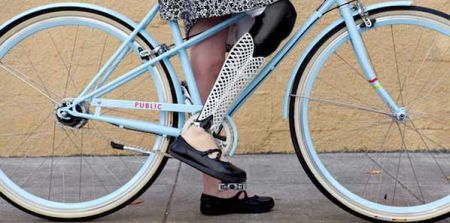Prosthetic limbs are now made with stronger, more lightweight materials and have empowered disabled people to accomplish impressive athletic tasks such as snowboarding and competitive dancing. However, for all the advances in technology, prosthetics have always appeared generic and impersonal. A San Francisco and Seville-based start-up company is returning style to the industrial-looking medical devices by using 3D printers.
Cosmetic Covers
The purpose of a prosthetic limb is to return functionality to people impacted by a physical disability. Amputees have accepted the synthetic look of artificial limbs, although some companies offer coverings for prosthetic legs, known as fairings. By covering the device with foam and plastic, symmetry is restored; both the natural and artificial legs appear to be roughly the same size.
Function and Fashion
The stigma that comes from losing a limb is not necessarily assuaged by mere symmetry. Self-conscious amputees had no choice in the appearance of their prosthetics, nor could they express their own personal style the way people do when shopping for clothing. Entrepreneur Eythor Bender, who previously developed the prototype for a bionic exoskeleton for paraplegics, realised that new technology in the form of 3D printing could change that.
Bender’s latest venture is UNYQ, which uses 3D printing technology to generate person-specific and fashionable fairings based on concepts which customers can find online or design themselves. When the company receives the design order, it takes four to six weeks to deliver the cosmetic covering to the customer. They are put into place using just four screws.
Quality of Life
The psychological impact of disability is not improved by skinny prosthetics with generic coverings, which can attract negative attention and additional trauma. Impressive robotics and elements of nanotechnology have significantly improved sensations in artificial limbs, and now amputees are being offered flexibility in the way they look as well. As ability replaces disability, confidence replaces embarrassment.
Affordability is another area addressed by Bender’s company. Prosthetic limbs often cost tens of thousands of dollars, and can be expensive to maintain. UNYQ recently announced that prices for its product line will be cut in half, so that the least expensive offering will cost just $500. Demand has been high.
Blurred Boundaries
Bender hopes to continue to challenge the separateness of fashion and technology, expanding his company’s services to the printing of more parts of the leg and other limbs. He also hopes that more companies will step up to support similar endeavours for the benefit of the disabled. “The body is a very complicated thing to replace,” he said. Meanwhile, his customers report the restoration of pride and dignity. Some have been stopped on the street and complemented on the 'cool' factor of their prosthetics.
Source: Forbes
Photo Credit: Google Images / Inhabitat
Cosmetic Covers
The purpose of a prosthetic limb is to return functionality to people impacted by a physical disability. Amputees have accepted the synthetic look of artificial limbs, although some companies offer coverings for prosthetic legs, known as fairings. By covering the device with foam and plastic, symmetry is restored; both the natural and artificial legs appear to be roughly the same size.
Function and Fashion
The stigma that comes from losing a limb is not necessarily assuaged by mere symmetry. Self-conscious amputees had no choice in the appearance of their prosthetics, nor could they express their own personal style the way people do when shopping for clothing. Entrepreneur Eythor Bender, who previously developed the prototype for a bionic exoskeleton for paraplegics, realised that new technology in the form of 3D printing could change that.
Bender’s latest venture is UNYQ, which uses 3D printing technology to generate person-specific and fashionable fairings based on concepts which customers can find online or design themselves. When the company receives the design order, it takes four to six weeks to deliver the cosmetic covering to the customer. They are put into place using just four screws.
Quality of Life
The psychological impact of disability is not improved by skinny prosthetics with generic coverings, which can attract negative attention and additional trauma. Impressive robotics and elements of nanotechnology have significantly improved sensations in artificial limbs, and now amputees are being offered flexibility in the way they look as well. As ability replaces disability, confidence replaces embarrassment.
Affordability is another area addressed by Bender’s company. Prosthetic limbs often cost tens of thousands of dollars, and can be expensive to maintain. UNYQ recently announced that prices for its product line will be cut in half, so that the least expensive offering will cost just $500. Demand has been high.
Blurred Boundaries
Bender hopes to continue to challenge the separateness of fashion and technology, expanding his company’s services to the printing of more parts of the leg and other limbs. He also hopes that more companies will step up to support similar endeavours for the benefit of the disabled. “The body is a very complicated thing to replace,” he said. Meanwhile, his customers report the restoration of pride and dignity. Some have been stopped on the street and complemented on the 'cool' factor of their prosthetics.
Source: Forbes
Photo Credit: Google Images / Inhabitat
Latest Articles
Prostheses, medical technology, 3d printing technology, prosthetic limbs
Prosthetic limbs are now made with stronger, more lightweight materials and have empowered disabled people to accomplish impressive athletic tasks such as...



























